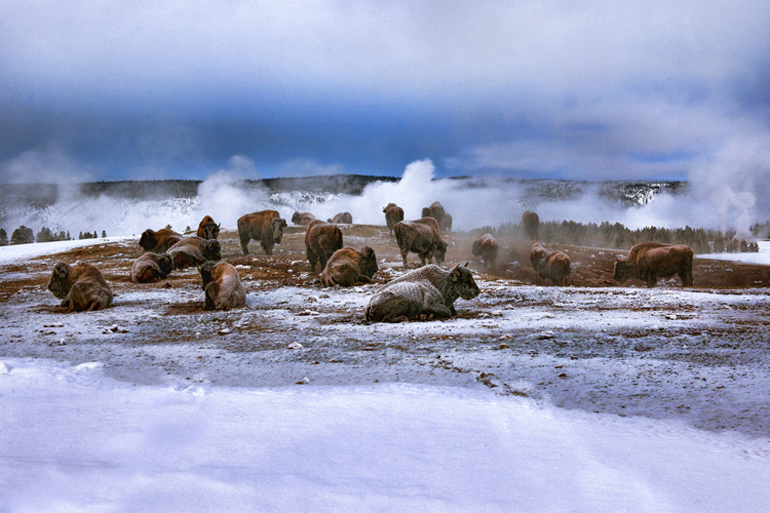
Earth provides enough to satisfy every man's needs,
but not every man's greed.
Mahatma Gandhi
So Martha and her kind belonged to the ages. A victim of man and his unconscionable greed? Perhaps. It's hard to say otherwise knowing the facts. But as we shall see humankind at its worst can change. There is more to this story.
We've all heard it before. Throughout much of the 1800s the American bison was shot to near extinction. I choose the word carefully as this was not hunting with a "fair chase" or a noble purpose, but mass killing for profit and fun. After skinning, the remainder of the carcass was left to rot on the prairie (occasionally they ate the tongue). In this manner a thundering herd of 50 million bison was thought to have been extinguished by the late 1800s. And then, lo and behold, a small herd, less than a thousand, was discovered in Yellowstone National Park. Could it be-a reprieve?
Less well known was a drama unfolding in the southeast coastal wetlands of the U.S.. The snowy egret was suffering a fate similar to the bison, being shot to smithereens, in this case by plume hunters, from point blank range. And the reason? To provide feathers, and even stuffed carcasses, to the fashion industry which then made giant hats for the well-to-do in New York, Chicago, and elsewhere.
The indiscriminate killing of bison, pigeon, and egret would eventually generate a strong backlash of public opinion. As the 19th century drew to a close, the shoot-em-up mentality of "hunters" in America was being seriously challenged. A conservation ethic was emerging in the nation, championed by powerful new forces. The "big stick" of President Teddy Roosevelt would establish the National Wildlife Refuge system and set aside 230 million acres of wild lands for protection. And a fledgling organization, destined to become the National Audubon Society, would serve as a strong advocate for wildlife. Things were getting serious. (next photo)